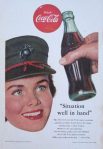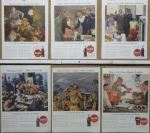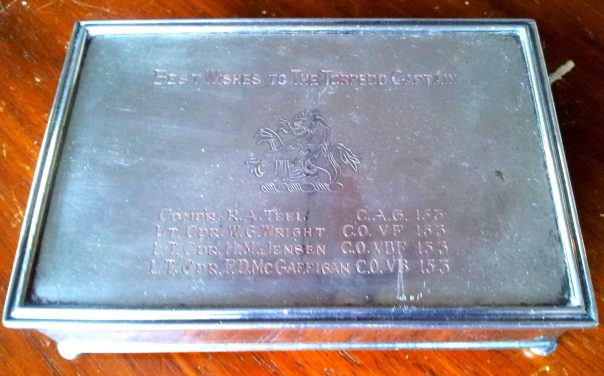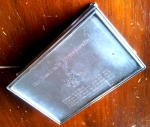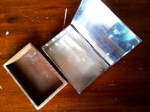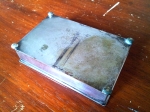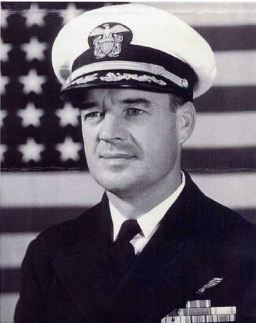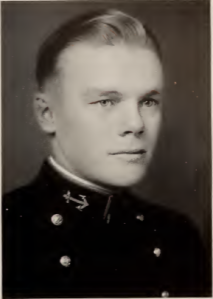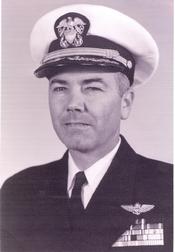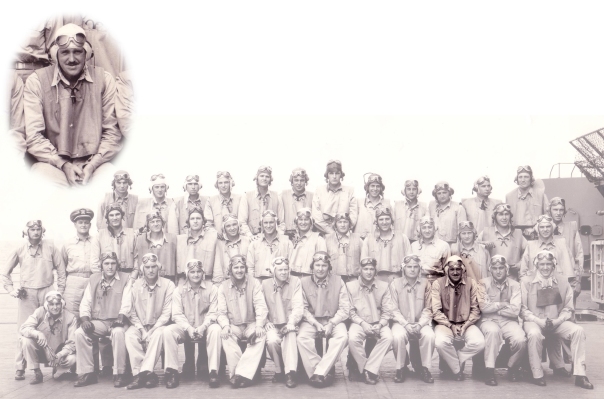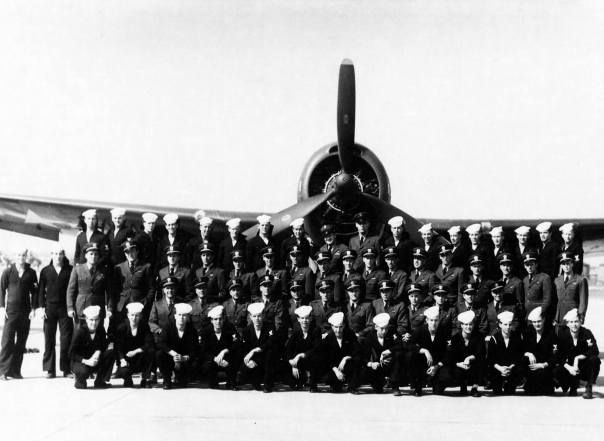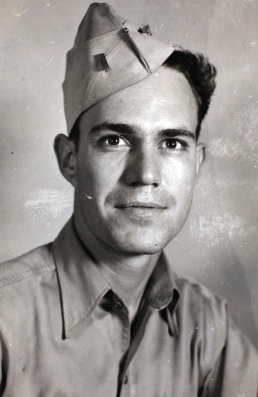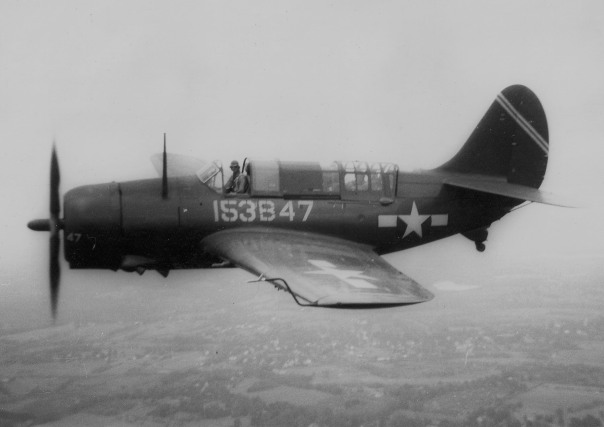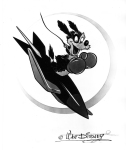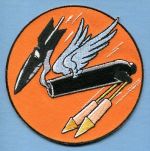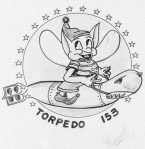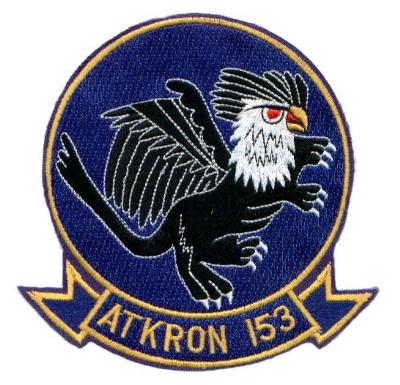Monthly Archives: February 2018
Embroidered Artistry – Shoulder Sleeve Insignia (SSI)

This WWI 81st Division shoulder sleeve insignia shows their division symbol, the Wildcat (image source: griffinmilitaria.com).
To most casual observers, army insignia patches (known as shoulder sleeve insignia or SSI) affixed to the shoulders of military uniforms, while visually interesting, are quite mysterious. Although today’s current designs are subdued (with muted black or brown stitching to be consistent with current camouflage schemes), they still employ sophisticated and intricate embroidery that formerly were lavished with brilliantly colored thread-work. Prior to the early 20th Century, other than rank insignia, army troops’ shoulders were plain.
During World War One, the 81st Division was the first to be authorized to employ a shoulder-affixed unit identification as they headed for France in 1918. The “Wildcats,” as the 81st was known, was the only U.S. Army division with permission for their personnel to wear patches on their uniforms during the war. With only a few short weeks remaining in the war, other units followed suit obtaining permission from General John J. “Black Jack” Pershing to begin wearing patches on October 19, 1918. Soon, there would be an abundance of varying unit insignia with multiple variations of patches for the individual units.
- The patch of the American Expeditionary Force Siberia (AEF Siberia) was a United States Army force that was involved in the Russian Civil War in Vladivostok, Russian Empire, during the end of World War I after the October Revolution.
- This patch of the 2nd Infantry Division (the Indianheads) is still active. It was formed in France in 1917 and is now based in Washington State.
Many of the WWI patches were constructed in-theater and were hand-made resulting, in some cases, with various representations on the same design. As a patch collector, this is both a point of frustration and enjoyment as they could spend years tracking down every known SSI-design instance.

This unique 4th Infantry Division patch features a roundel insignia of their parent, the 3rd Army in the center of the patch.
As WWI veterans returned home, their ornately decorated uniforms drew the attention of would-be collectors and soon, the practice of stripping uniforms for their patches was born. It wasn’t uncommon for veterans to gift these patches to their children, giving birth to what would become one of the largest segments of militaria collecting, to this day.
Exercise caution (or seek advice of experienced collectors) prior to purchasing patches of this era. Considering the availability of period-correct wool flannel material, many of the World War 1 SSIs are easily reproduced and passed off to inexperienced collectors as authentic.
Shoulder Sleeve Insignia of the American Expeditionary Forces 1918-1919
By the mid-1930s, collectors in upstate New York organized an exchange that would become the basis for The American Society of Military Insignia Collectors or ASMIC, one of the oldest organizations in the area of militaria collecting. With a resource such as ASMIC, collectors can draw from the knowledge of professional collectors as well as trade or purchase insignia.
In the years leading up to and during World War II, SSI were mass-produced and designs were standardized which meant that variations would be reduced. However, this did not eliminate variations altogether.
During the Viet Nam war, subdued patches were introduced for wear on combat uniforms providing additional variants of the same insignia. With the downsizing and restructuring of the Army, units have been decommissioned or combined resulting in fewer SSIs. When the U.S. Army transitioned to the Army Service Uniform (ASU), or dress blues, completely by October 1, 2015, the change all but eliminated the colorful patches as they are no longer worn on dress uniforms.
The only constant is change and uniform changes have been happening within the Army, Air Force and Navy in the past few years. Awaiting approval by
Will the Army do away with unit patches all together? Only time will tell.
Theater-Made Militaria: Shoulder Sleeve Insignia…are they Real?

This Australian-made First Marine Division patch was created for the battle-hardened veterans of Guadalcanal while on R&R in Melbourne Australia (source: Flying Tiger Antiques).
Within the realm of just about every collecting pastime exists undocumented glossaries packed with terms and phrases used to describe certain aspects of that particular genre. For those of us new to collecting, these terms can be some of the biggest obstacles to understanding the ins and outs of collecting, especially as we are trying to navigate our way to better understand specifics and details.
In some instances, terms can be rather self-explanatory (at least for people like me), but still may not make a whole lot of sense. Such is the case with “theater-made.” which seems to be bandied about rather freely.
As I launched into militaria collecting, I saw the term applied to a broad swath of army items, predominantly shoulder sleeve insignia (or patches) dating from World War I to present day. What astounded me was that these experts could spot not only that a particular piece was theater-made, but could tell you where in the world it was made. With certain pieces, a theater-made example could sell for considerably more than an American-made patch. The Australian-made 1st Marine Division patch comes to mind.
- This China Burma India (CBI) patch is one of my theater made SSIs.
- My father, a Viet Nam combat veteran, wore a patch like this on his OD fatigues in country. I have my doubts as to the authenticity of it as a vintage patch, instead it could be one of the thousands currently reproduced in Viet Nam to capitalize on the growing collector market
As a veteran of the U.S. Navy, theater-made items seem commonplace. During our six month-long deployments to the Western Pacific, our ships would visit ports in countries such as the Philippines and Hong Kong. During our three- and four-day stays, many of us would take what little money we saved and head out to the tailor and embroidery shops to order custom uniforms or uniform items from the local craftsmen. These special-order pieces add a unique and personal touch for uniforms worn out on liberty or to make us stand out in a positive manner during inspection. However, we never thought of these components as theater-made.

This WWII army veteran’s uniform sports a right-shoulder SSI of the 5307th Composite Unit (also known as Merrill’s Marauders).
As some of the custom pieces are slightly more rudimentary in construction, forgers tend to leverage that to their advantage. When collectors begin to pursue what are being passed off as theater-made items, they must have some sort of education before pulling the trigger to protect themselves from being deceived.
Military Veterans Aiming for Gold: Collecting Olympics Militaria
On the cusp of the 2018 Winter Olympics in PyeongChang, South Korea, I find myself scouring the United States team roster in search of service members (current and former) who are making their way to the icy and snowy venues for this year’s competition. Undoubtedly, as the television production of the games progresses, there will be some special interest stories aired that will cover certain members of Team USA who endured and overcame challenges within their sport on their paths to making the US Olympic Team.
| Veteran | Rank | Unit | Branch | Sport |
| Weber, Nathan | SFC | 10th Special Forces Group | Army | 4-Man Bobsled |
| Olsen, Justin | SGT | NYNG | 4-Man Bobsled | |
| Cunningham, Nick | SGT | 1156 ENG CO | NYNG | 4-Man Bobsled |
| Fogt, Chris | CAPT | Military Intelligence | Army | 4-Man Bobsled |
| Sweeney, Emily | SGT | Military Police | ANG | Luge |
| Mortensen, Matt | SGT | Army | Luge |
When the spotlight of NBC’s coverage shines upon the sledding events (bobsled, luge and skeleton), those feel-good stories very well could include one of more vignettes of the six team USA members who temporarily laid aside their military uniforms in exchange for the read, white and blue skin suits, helmets and spikes for the sledding competition at the Alpensia Sliding Center. Having active duty service personnel and veterans filling spots on Olympics rosters is not a new occurrence for the 2018 team. Some American Olympic competitors were merely civilian, amateur athletes heading into their competitions as was the case with the subject of one of the most compelling and difficult stories of World War II of the experiences of a Southern California track star.
In her 2010 biography, Unbroken, author Laura Hillenbrand’s best-selling work extensively details the life of United States Army Air Force captain, Louis Zamperini and the challenges he faced in the nearly unbelievable life-story. In short, the B-24 that Zamperini was a crew member of, experienced mechanical failures and crashed into the Pacific some 850 miles south of the Hawaiin Islands. Of the 11 crew members, Ernie and two others escaped and spent a harrowing 47 days adrift (one man died) before being picked up by the Japanese. Zamperini would endure two and a half years as a guest of the Emperor of Japan suffering unspeakable abuses, starvation and torture (see the 2014 adapted film, Unbroken).
What does Zamperini have to do with the Olympics? Louis “The Torrence Tornado” Zamperini was a star distance runner from the University of Southern California who placed 8th in the 5,000 meter at the Berlin games in 1936, under Hitler’s watchful eye. Because of his performance at the ’36 games, the Japanese discovered his identity and used his stardom to become the focus of their torture and hatred.

George Patton during the running event of the 1912 Modern Pentathlon (image source: Wired.com).

Patton (at right) fencing (vs Jean de Mas Latrie of France) in the modern pentathlon of the 1912 Summer Olympics (public domain image).
Zamperini’s story aside, I wondered how many U.S. Olympic athletes served in combat. One veteran comes to mind that, for me, has a direct connection to a piece of militaria in my collection. This Olympian finished 5th in the Modern Pentathlon at the 1912 Stockholm summer games behind four Swedes who dominated the event. Second Lieutenant George S. Patton did manage to stir some controversy with the shooting event, opting to use a .38 caliber pistol rather than the more conventional .22-cal. While officially placing 20th, Patton claimed that the rounds which counted as misses had passed through his preceding target strikes. Nevertheless, his low shooting score helped to keep him out of medal contention.
One veteran who competed in two Olympics (1960 Rome and 1964 Tokyo games) as a race walker, has the rare distinction of having been killed in action in the Viet Nam War. West Point graduate (class of 1962), Captain Ronald Zinn, while serving with the 173rd Airborne Division, was killed on July 7, 1965 in a firefight near Saigon. His best Olympic performance was in Tokyo where he placed 6th while competing for his native country, Brazil.
During the summer games in Rio, spectators watched in awe of Michael Phelps’ return to the pool as he racked up five more gold and another silver medal to his already-established record of 22 total. Phelps finished his career with 23 gold, three silver and two bronze medals setting him ahead of the next best (Larisa Latynina of the USSR – 18 total). The all-time greatest Winter Olympic athlete, Ole Einar Bjørndalen, a biathlete from Norway (with 13 medals) has less than half of Phelp’s total. One stat that many Americans will most certainly not know is that prior to Mark Spitz winning his 11th medal at the 1972 games, the sole medal-count (male) leader for the United States was a U.S. Navy veteran.
Naval Academy graduate (class of 1907), Carl Osburn, competed in three Olympic games (Stockholm 1912, Antwerp 1920 and Paris 1924) earning five gold, four silver and two bronze medals in several rifle shooting events. One is left to wonder how many more Osburn would have earned had the 1916 Berlin games not been cancelled due to World War I. In 1936, while in transit from one duty station to another, my uncle was aboard the USS Henderson (AP-1) when Captain Carl Osburn was serving as the ship’s commanding officer which (very) loosely connects pieces of my militaria collection to this Olympic medalist.
Trying to find pieces that cross both militaria and Olympics-collecting can be quite a daunting, if not expensive pursuit for collectors. Due to the extremely small number who competed in the games, anything stemming from one of these veterans will rarely be available for purchase.
- Challenge coin and Olympics collectors would love to have this Marine Corps U.S. Consulate Guard coin from the Rio de Janeiro Olympics (source: eBay image).
- Reverse of the Marine Corps U.S. Consulate Guard coin from the Rio de Janeiro Olympics (source: eBay image).
One crossover aspect (of these two collecting genres) that I appreciate…and is affordable…is the application of the five rings of the Olympic logo on military-related items. I found a handful of aviation squadron patches that either commemorated the games of a specific year or used the logo in a tongue-in-cheek manner.
- The Olympics-theme (the five interlocking rings) is oft-used in many military squadron patches such as this from Lackland, AFB. Perhaps this coincided with the 1996 Atlanta Games (source: eBay image).
- This rather un-politically-correct attempt at humor (and modification of the Olympic interlocking rings) as the fallout resulting from the investigation of the 1991 convention (and scandal) was still in the forefront of naval personnel (source: eBay image).
These patches definitely interest me and leave me searching the web for theater-made Olympic themed patches that might surface from the returning Afghanistan veterans.
Though the games have yet to begin, the nation that is the heavy favorite to bring home the most hardware is Germany due to the IOC-ban that will exclude the 2014 victor, Russia (as a competing nation) due to their systemic cheating via doping (though a smattering of athletes will be allowed to compete if they are determined to be “clean”). The US team is predicted to finish in fourth place behind Norway and Canada, respectively. I will be watching with great hopes that our sledding teams bring home hardware but more importantly, that they honor both their Team USA and Army uniforms.
See more on U.S. troops competing in the 2018 Winter Games:
2018 Winter Olympics: USA Bobsledders, Soldiers have experience on their side
Military police Soldier leads Army’s charge onto 2018 U.S. Olympic Team










